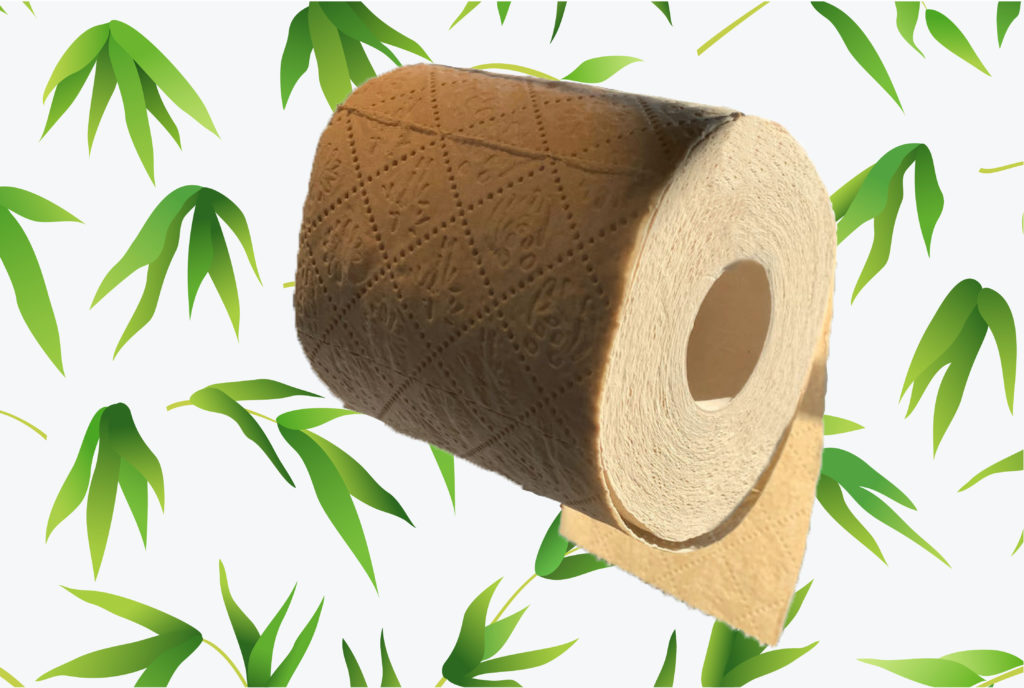Will that be Recycled or Bamboo for You?

We all know that climate-change impacts are beating a louder and steadier beat. Maybe you saw this NYT article about the convergence of waters in Antartica’s Southern Ocean throwing age-old, miles-deep stores of carbon dioxide into the atmosphere. Or heard that we reached Earth Overshoot Day on July 21st last year, signaling we’d used up our annual alotment of renewable resources some five months early. (Feeling confident about your green-ness? Calculate your personal Overshoot Day here and see where you stand). Now we’re finding that billions (with a b) of Covid masks are winding up in our oceans, spilling itty bitty plastics as they ride the currents. The Great Pacific Garbage Patch, already twice the size of Texas, is about to get a lot bigger.
Maintaining optimism about climate change in the face of the facts is a challenge, but as 18-year-old Greta Thundberg, the indefatigable environmental activist, puts it: “Instead of looking for hope, start creating it.”
The #DG.NurtureNature Challenge, 2022
Grabbing that baton, and inspired by the work of Project Regeneration, Dirty Gaia is launching monthly #NurtureNature challenges throughout 2022. Each month we’ll encourage you to make a relatively simple lifestyle shift that, performed cumulatively as a community, can help combat climate change. There are bad habits abounding out there, some beyond an individual’s control to change. But there are also plenty that we can work toward correcting. Let’s turn the tide, action-by-action. Starting today.
Introducing our first #DG.NurtureNature Challenge of 2022: Switch to recycled paper or bamboo tissue in the loo!
The Issue with Tissue
Much of the tissue paper used in the US—and we use an inordinate amount of it relative to the rest of the world— comes from the boreal forest in Canada, an expanse the Natural Resource Defense Council’s 2019 Issue with Tissue report calls “a vast landscape of coniferous, birch, and aspen trees [that] contains some of the world’s last remaining intact forests, and is home to over 600 Indigenous communities, as well as boreal caribou, pine marten, and billions of songbirds. Yet, industrial logging claims more than a million acres of boreal forest every year…”
Even before factoring in that these virgin forests are being pulped to make paper products that will be flushed down the toilet after a single use, this is heartbreaking. And avoidable.
Good Rolls, Bad Rolls
The NRDC updates their Issue with Tissue report annually, calling out the best and worst of three major tissue makers— Procter & Gamble (Bounty, Charmin), Kimberly-Clark (Scott, Cottonelle) and Georgia-Pacific (Brawny, Quilted Northern, Angel Soft), as well as newcomers in the green sector. The November 2021 report includes bamboo products for the first time, but top marks for environmental friendliness went to two 100% recycled paper rolls: Who Gives a Crap (available a the O Zone for those of you in the Red Hook/Rhinebeck, NY area), and Green Forest, available in many grocery/natural food stores.
Check out the NRDC’s full chart of preferred (and damned) products here. Spoiler alert: if you’re using Charmin, Angel Soft, Cottonelle or Quilted Northern, you’re supporting the F troops. P&G increased its use of wood fiber from Canada last year.
Label Gaze
Check out the small print when choosing tissue—one Scott roll, for example, received an F from the NRDC, while another, the Scott Essential Roll, more often used commercially, earned an A. Ideally, 100% recycled rolls will be labeled “whitened without chlorine.”
The Forest Stewardship Council tick tree logo (see photo at right) indicates that the sourcing and manufacturing of a product meets the Council’s standard of sustainability. The FSC logo applies to bamboo rolls, too, even though the fastest-growing plant in the world is a grass, not a tree.
Because some old growth forests have been leveled in order to plant bamboo, and because much of the bamboo used in tissue manufacturing comes from China, it’s not without its environmental negatives. On the plus side, bamboo tissue is 100% biodegradable (especially significant for those relying on septic systems) and eminently renewable—as anybody who’s tried to contain it in their garden knows all too well.
The Rainforest Alliance Certified seal indicates a product manufactured using sustainable social, economic and environmental methods.

Weigh the Options
Alas, there are pros and cons to both bamboo and recycled tissue. Bamboo’s got carbon footprint baggage, as noted above, and the chemical residue potential in 100% recycled rolls (what exactly was, and is, in that post-consumer paper?) is off-putting to some. But manufacturers are addressing these issues, and neither bamboo nor recycled paper entail the egregious environmental assault of the old-fashioned, virgin-forest-killing, quilted/3-ply stuff.
Regardless of which tissue you choose, consider that less is more—how many squares do you really need to get the job done? If you want to bypass paper altogether, consider a bidet! No more lugging those oversized 12-count bundles that don’t fit in a tote.
If a bidet’s not in the cards (before you protest, consider that HelloTushy offers bidet attachments that take 10 minutes to install), recycled and bamboo tissue—and paper towels and napkins—are increasingly available. CVS, Hannafords and Tops markets around the Rhinebeck/Kingston area carry them, as do local health food stores. Cost is slightly higher than for the antiquated boreal-sink-destroying paper, but only by a buck or two. A worthy investment in the environment if ever there was one.
It’s time to go….and make the switch!
When you do, please tag us: @dirtygaia and #dg.nurturenature.tp, so we can vigorously applaud you! And if you’re already in the recycled/bamboo camp, let us know that, too. Extra points for that, you early adapters, you.
————————————————————————————————————-
Disclaimer: DirtyGaia is not affiliated with the NRDC or any of its programs, projects or websites.
